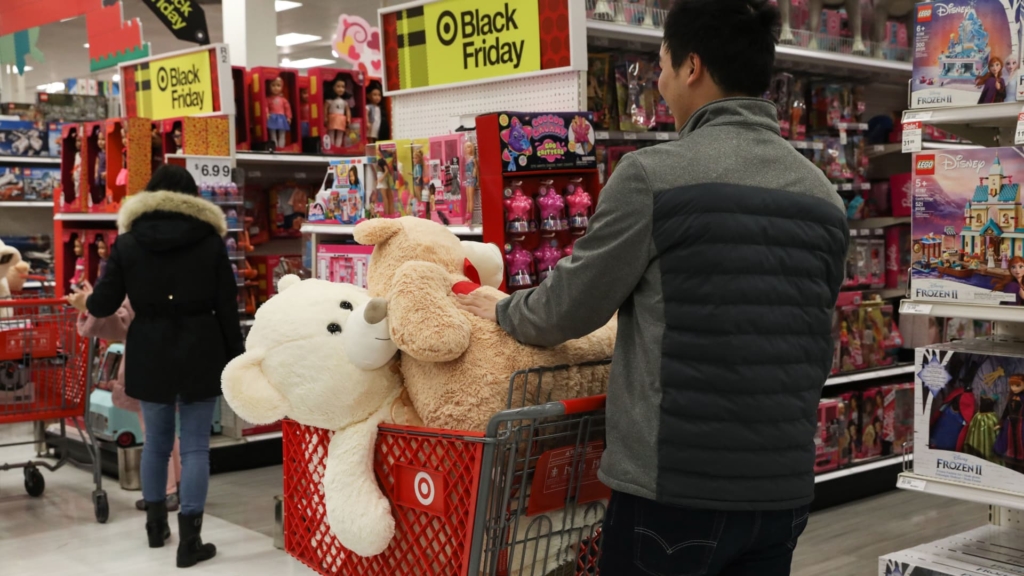Consumers can expect to see rising prices in the toy aisle shortly.
This week, President Donald Trump escalated the ongoing trade conflict by implementing a 10% tariff on most countries and significantly increasing levies on several others. Notably affected are China and Vietnam, two countries essential to the U.S. toy industry.
U.S. toy manufacturers have traditionally relied on Chinese production to supply popular toys, including action figures, dolls, and games. Meanwhile, Vietnam has emerged as a key alternative for companies seeking to diversify their manufacturing options amid escalating trade tensions between the United States and China.
On Wednesday, the President imposed an additional 34% tariff on Chinese goods, raising the total to 54%, while Vietnam faced a 46% tariff. This steep increase was beyond the expectations of toy companies and could result in significant price hikes for consumers, according to industry analysts.
“Everyone is really in scramble mode,” remarked Greg Ahearn, president and CEO of The Toy Association, in an interview with Finance Newso. “This is going to have massive negative repercussions for the consumer and for our industry.”
China has announced its intention to retaliate, planning to impose a 34% tariff on all American products, as reported by its commerce ministry on Friday.
“I believe the situation with Vietnam will be easier to negotiate, as I expect the Vietnamese government to engage in discussions more swiftly than China regarding trade disputes,” commented Curtis McGill, co-founder of Hey Buddy Hey Pal, a company known for producing the Eggmazing Egg Decorator, a crafting tool for children. “Vietnam cannot afford to lose a substantial portion of its business.”
Statistics from The Toy Association indicate that 77% of toys imported into the U.S. come from China, with Vietnam ranking third, just behind Mexico. Previously, Trump enacted a 25% tariff on non-compliant goods from Mexico as part of the United States-Mexico-Canada Agreement.
Leading toy manufacturers like Hasbro and Mattel had previously accounted for a 20% impact from tariffs in their 2025 projections and had taken steps to shift some production to nations including Vietnam, Indonesia, and India. However, these countries also faced tariffs of 46%, 32%, and 26%, respectively.
Eric Handler, an analyst at Roth, noted in a research report released Thursday that relocating production may no longer be financially feasible. “Consumers should prepare for price increases to partially offset the impact of these tariffs,” he wrote.
As Hasbro and Mattel prepare to report their first-quarter earnings this month, Handler suggested that guidance cuts from both companies are likely. Wall Street has already reacted negatively to the tariff news, with shares of Mattel dropping over 16.5% and Hasbro falling more than 12%. Meanwhile, Funko, which also has manufacturing in China and Vietnam, saw its stock decline by 18%.
Handler anticipates that companies will attempt to mitigate costs through renegotiating contracts with manufacturers and possibly adjusting packaging, but he emphasized that consumers will ultimately bear the burden of increased tariffs.
“We could see price hikes ranging from 35% to potentially a full-point increase depending on the product margins,” Ahearn warned. “Given the 54% tariff, prices could actually increase by 50%.” He added that most toy profit margins are only in the high single digits, offering little flexibility for companies to absorb these extra costs.
Ahearn also pointed out that the responsibility for these price increases will likely fall on consumers, particularly impacting those with limited financial means. He indicated that the Toy Association anticipates price hikes to coincide with the upcoming back-to-school shopping season.
“Unfortunately, the greatest financial burden will be on those who can least afford it,” he stated.


























